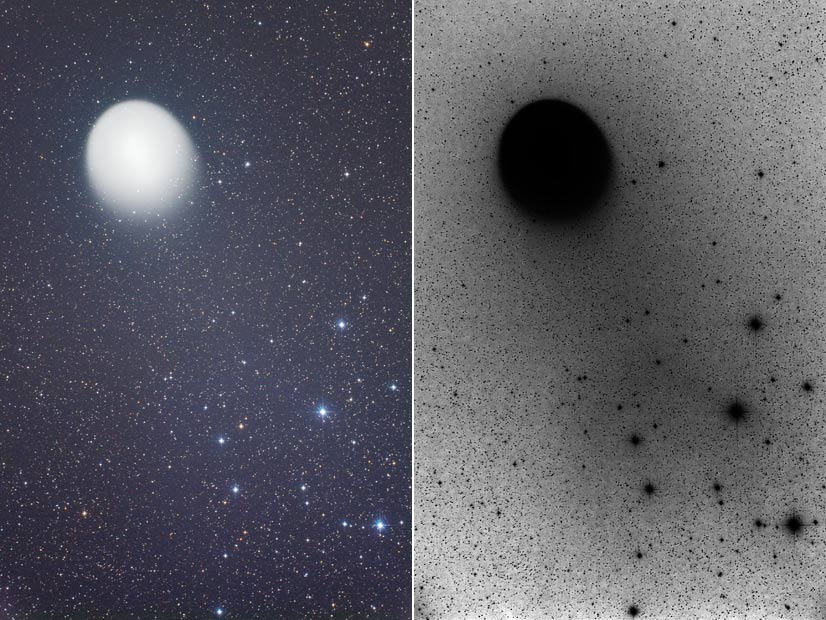
 |
| Date & Time: | Nov 11 2007, from 19:53 to 20:06 JST(+0900) |
| composed 4shots with 4 minutes exposed | |
| Optical: | Meade 25cm(10") Schmidt-Cassegrain with a conversion lens (f=1600mm, F6.3) |
| Auto-guided with Meade LX200 Equatorial & Pictor 201XT | |
| Digital Camera: | Nikon D80 (Remodeled) |
| Location: | Ooizumi, Hokuto city, Yamanashi pref. |
| Camera Settings: | Recording format...12bit CCD-RAW, converted to 16bit TIFF(3872×2592) |
| CCD Sensitivity...ISO1600 |
 |
| Date & Time: | Nov 11 2007, from 18:55 to 19:18 JST(+0900) |
| composed 4shots with 1min. & 4shots with 5min. exposed | |
| Optical: | TAKAHASHI 16cm(6.3") epsilon (f=530mm, F3.3) |
| Auto-guided with TAKAHASHI JP Equatorial | |
| Digital Camera: | Fujifilm FinePix S2Pro |
| Location: | Ooizumi, Hokuto city, Yamanashi pref. |
| Camera Settings: | Recording format...12bit CCD-RAW, converted to 16bit TIFF(3024×2016) |
| CCD Sensitivity...ISO1600, White Balance...Auto |
 Holmes on Nov 14, 2007 |
 Holmes on Nov 7, 2007 |
 |
 |
Copyright(c) 2007 by Naoyuki Kurita, All rights reserved. |
| To top page | To Comets&Meteors index |